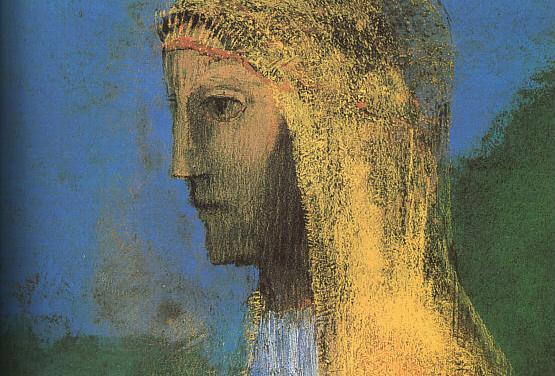
LIFE AS MYTH
![]()
JOURNAL
![]()
JOURNAL 2011
![]()
Life as Myth
Naming a life
![]()
WINTER 2011
A prince of dreams
![]()
LIFEWORKS
![]()
ATLAS
![]()

WINTER 2011
FROM A BROKEN STONE
The Druidess [detail]. Odilon Redon. 1893. The Ian Woodner Family Collection, New York. In Celtic tradition, the Druidess is a priestess who has the gift of divination.
And the vessel that he made of clay was marred in the hand of the potter: so he made it again another vessel, as seemed good to the potter to make [it].
Jeremiah 18:4 (KJV)Odilon Redon explored the character of Parsifal, the archetypal Arthurian fool, several times in his career. Some art historians believe that the first stone, which Redon used for Parsifal I, was either flawed or broke late in the artistic process. Whether the stone broke or not is debated. However, there is a general consensus that Parsifal I does not represent the ultimate result.
Between the creation of Parsifal I and Parsifal II there was another image: The Druidess (a lithograph from 1891). By inverting Parsifal I and comparing it to The Druidess, it becomes clear that the same stone was used for both works.
There is another argument that the actual progression of the image begins earlier than that, with Druidess I (no longer in existence). Under that theory, Redon reworks the stone used for Druidess I and creates Parsifal I. He then etches the stone, yet again, to the existing lithographic image of The Druidess (1891).* But whether Parsifal or a Druidess was the original image, the intimate mythological link between hero and prophetess which Redon explored provides a rich context with which to consider these lithographs.
FURTHER READING
*A detailed explanation of this theory is in the December edition of The Art Bulletin. That article also contains images of Parsifal I and The Druidess (1891). See: Dario Gamboni, "Parsifal / Druidess: unfolding a lithographic metamorphosis by Odilon Redon". Art Bulletin, The. Dec 2007.

